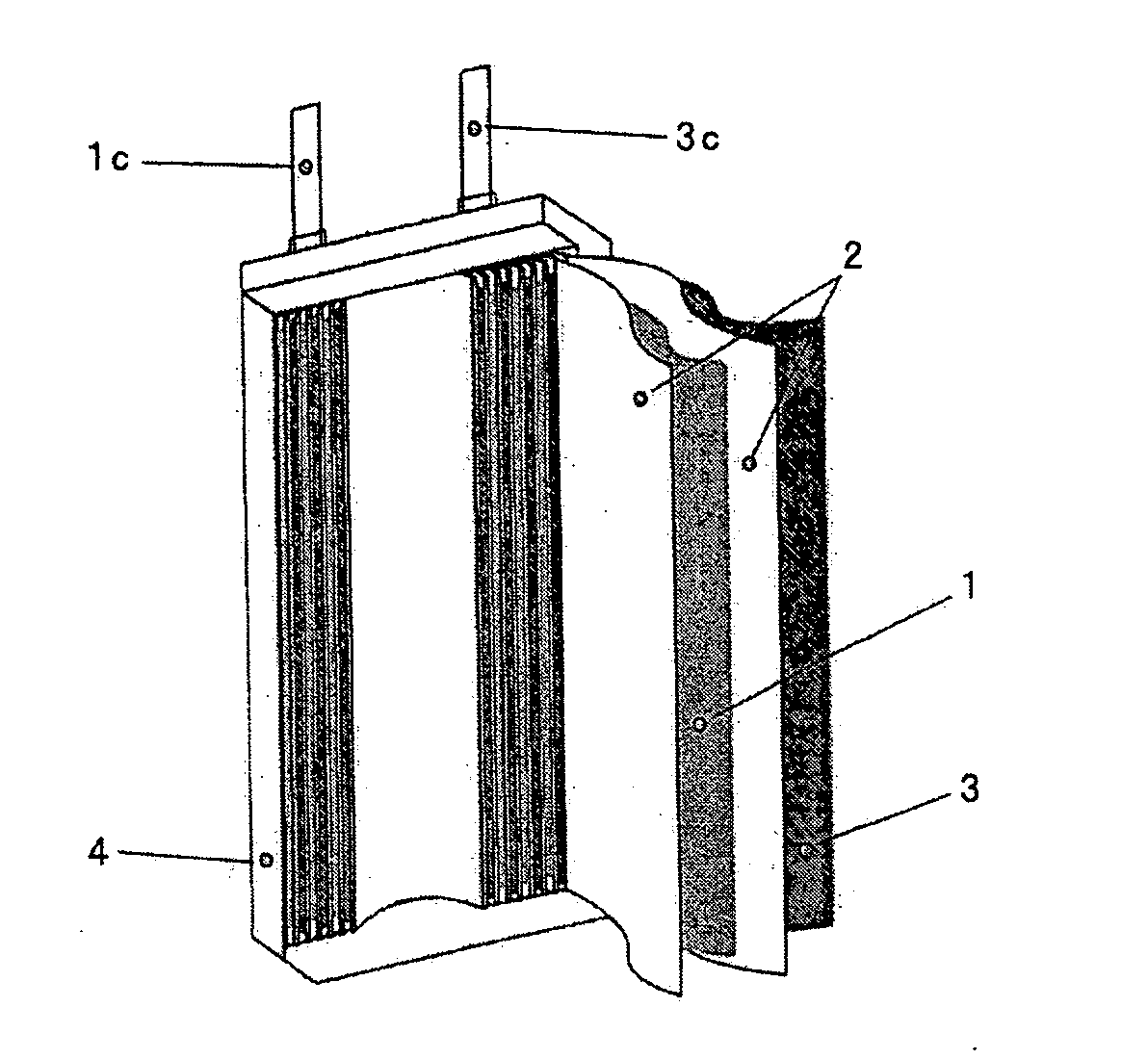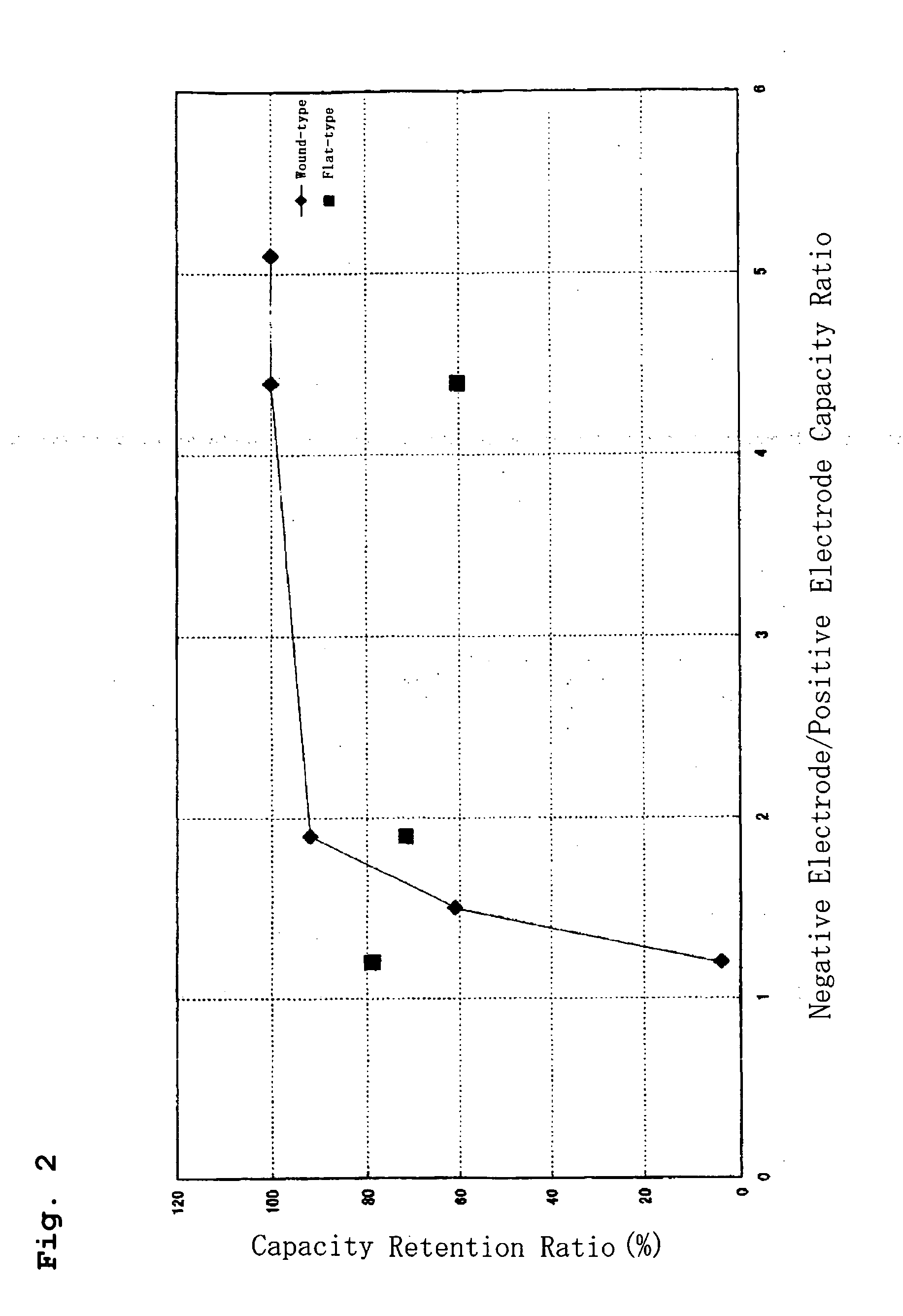Lithium secondary battery
a secondary battery and lithium technology, applied in the direction of wound/folded electrode electrodes, cell components, sustainable manufacturing/processing, etc., can solve the problems of degrading the charge-discharge cycle performance of the battery, reducing the current collection performance of the electrode, and pulverizing or peeling of active materials from the current collector, etc., to achieve good charge-discharge cycle performance and high charge-discharge capacity
- Summary
- Abstract
- Description
- Claims
- Application Information
AI Technical Summary
Benefits of technology
Problems solved by technology
Method used
Image
Examples
example 1
[0036] Preparation of Negative Electrode
[0037] A pressure-rolled copper foil using Corson alloy on both sides of which irregularities were formed by an electrolytic process (tensile strength 400 N / mm2, thickness 18 μm, Ra=0.4 μm, Rz=5 μm) was used as a current collector. Silicon-cobalt alloy thin films (cobalt content: 30 weight %) were formed on the surfaces of the copper foil by RF sputtering. The conditions of the sputtering were: sputtering gas (Ar) flow rate: 100 sccm, substrate temperature: room temperature (not heated), reaction pressure: 1.0×10−3 Torr, and high-frequency power: 200 W. The thin films were deposited to a thickness of about 6 μm, and were formed on both sides of the copper foil. An XRD analysis confirmed that the resultant thin films were amorphous.
[0038] Preparation of Positive Electrode
[0039] 94 weight % of LiCoO2 powder having an average particle size of 10 μm, 3 weight % of carbon powder as a conductive agent, and 3 weight % of polyvinylidene fluoride po...
example 2
[0057] A positive electrode was prepared in the same manner as in Example 1, except that the weight of the positive electrode mixture applied was 135 mg / 10 cm2 per one side. A lithium secondary battery was fabricated in the same manner as in Example 1 except for the use of the resultant positive electrode. With the lithium secondary battery thus fabricated, the positive electrode charge capacity, the negative electrode theoretical capacity, the capacity ratio, the initial charge-discharge efficiency, and the capacity retention ratio were determined in the same manners as in Example 1. The results are shown in Table 2 below.
[0058] The charge-discharge current in the initial charging and discharging was 116 mA, the charge-discharge current in the charge-discharge test was 580 mA, and the end of charge current was 29 mA.
PUM
| Property | Measurement | Unit |
|---|---|---|
| arithmetical mean roughness Ra | aaaaa | aaaaa |
| arithmetical mean roughness | aaaaa | aaaaa |
| arithmetical mean roughness | aaaaa | aaaaa |
Abstract
Description
Claims
Application Information
 Login to View More
Login to View More - R&D
- Intellectual Property
- Life Sciences
- Materials
- Tech Scout
- Unparalleled Data Quality
- Higher Quality Content
- 60% Fewer Hallucinations
Browse by: Latest US Patents, China's latest patents, Technical Efficacy Thesaurus, Application Domain, Technology Topic, Popular Technical Reports.
© 2025 PatSnap. All rights reserved.Legal|Privacy policy|Modern Slavery Act Transparency Statement|Sitemap|About US| Contact US: help@patsnap.com



